Best Japanese Homeschool Curriculum with Japanese From Zero!
When we started looking into a Japanese homeschool curriculum, I was surprised by my son’s eagerness to dive into such a challenging language.
Japanese is considered one of the toughest languages to master, so it was both exciting and daunting to commit to it as part of our homeschool journey.
After exploring options, we found that Japanese from Zero! stood out as the best homeschool foreign language curriculum for us. I’ll share why this program has been such a great fit for us and the resources we use alongside it to make learning Japanese engaging and fun.
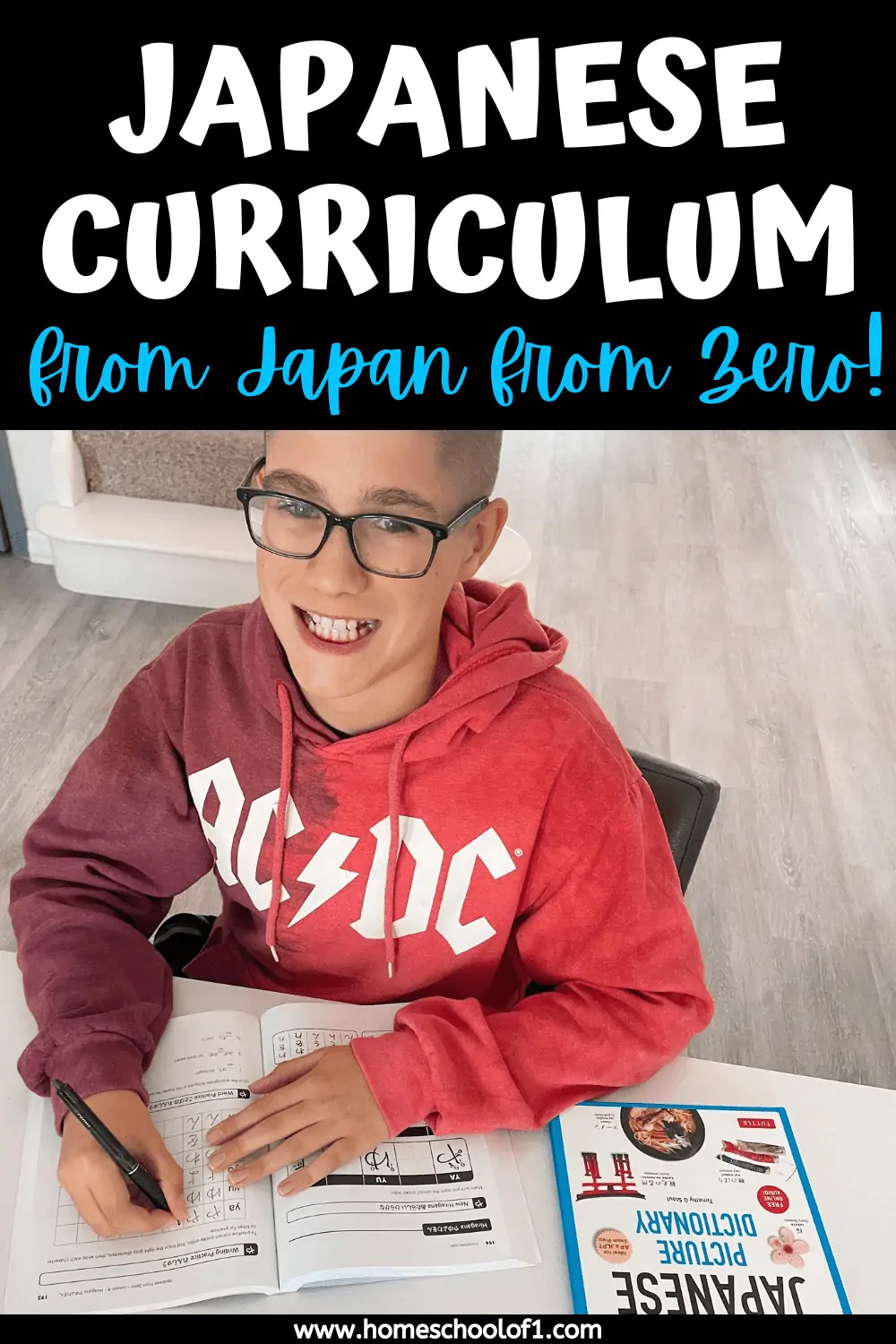
**This post may contain affiliate links. As an Amazon Associate and a participant in other affiliate programs, I earn a commission on qualifying purchases.**
Best homeschool Japanese curriculum
Finding a good (and affordable) Japanese language curriculum wasn’t easy. I wanted something effective that wouldn’t break the bank or feel tedious, especially for such a challenging language.
After a lot of research, we chose Japanese from Zero! as our primary curriculum.
My son uses both the workbooks and the YouTube channel, which brings each lesson to life with engaging explanations and examples.
If your child is also interested in learning Japanese, here are additional resources we’ve incorporated to create a well-rounded Japanese homeschool experience.
Japanese from Zero!
Our main Japanese curriculum is Japanese from Zero!, a well-structured program that uses a blend of workbooks and videos to teach the fundamentals.
My son enjoys the straightforward layout and pacing, making it approachable even for beginners.
George Trombley, the creator, adds a lot of personality to the lessons through his YouTube videos, which keeps the content engaging. Each workbook lesson covers new hiragana, vocabulary, grammar points, and everyday phrases, making it a comprehensive choice for homeschoolers.
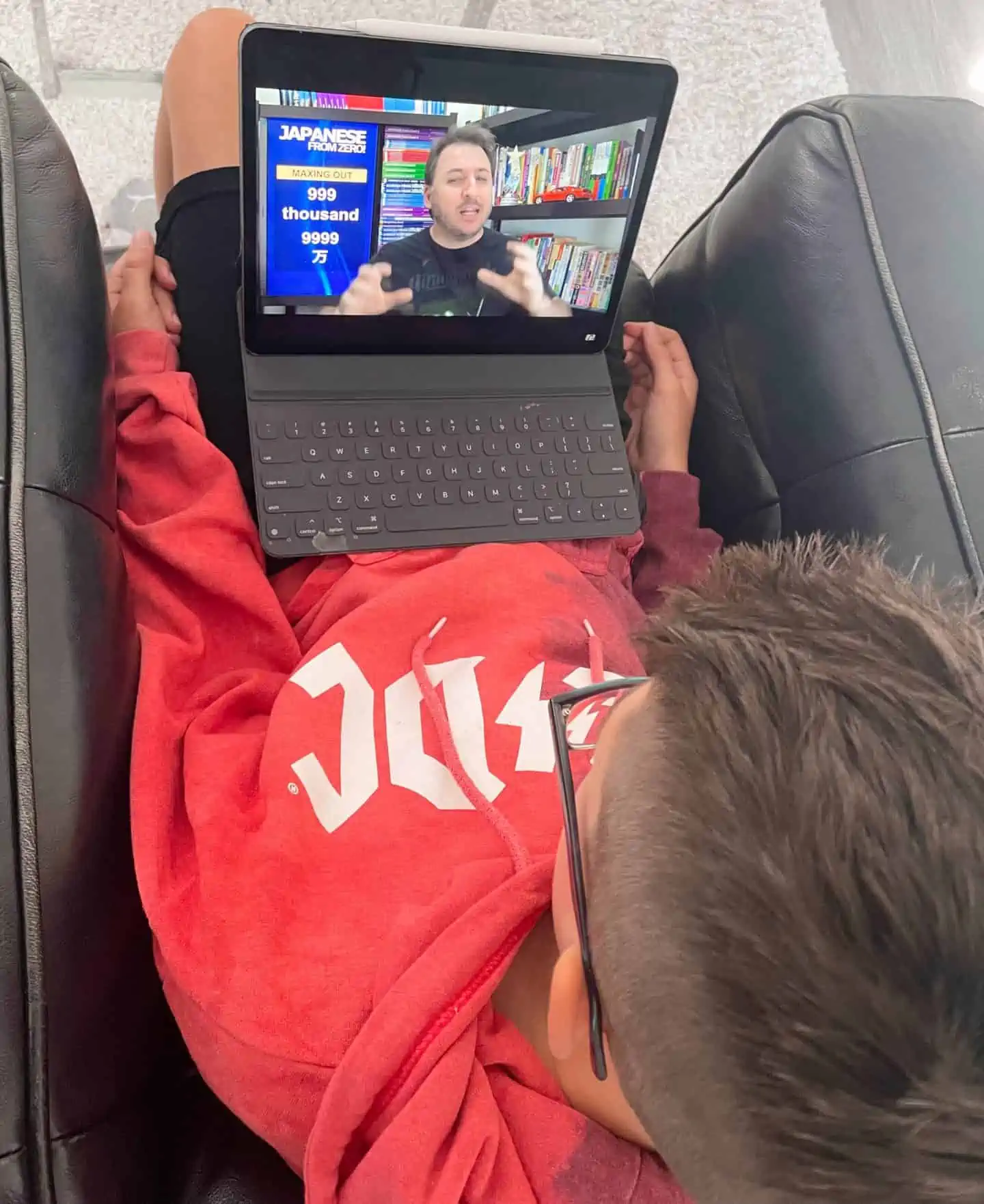
Beyond the main curriculum, here are a few resources that have helped keep my son engaged with Japanese.
Duolingo
We use Duolingo as a supplement to the curriculum for additional vocabulary and review.
Duolingo’s game-like approach is perfect for breaking up more formal study sessions, adding a bit of variety to my son’s practice.
The app introduces new vocabulary and sentence structures in a low-pressure way, making it ideal for quick practice sessions throughout the day.
However, it’s not as in-depth as the main curriculum, so we use it primarily as a supplementary tool to reinforce what he’s learning.
Outschool
Outschool offers a variety of Japanese classes, which makes it an ideal supplement as my son gains more confidence in the language.
While we haven’t started these classes yet, I plan to add them as he progresses.
Outschool’s live, interactive classes cover topics from basic conversation to kanji writing, providing real-time engagement with experienced instructors.
For homeschoolers, this interactive option will add another layer of learning once he’s ready to take his Japanese skills further.
Check out my full Outschool review to see what other classes we enjoy.
Lingopie
Lingopie is a unique resource where you can watch TV shows in Japanese with subtitles, which helps with listening skills and exposes learners to authentic Japanese language and culture.
When my son was younger, we used Lingopie to support his Spanish learning, and we plan to introduce it for Japanese after he’s completed his first year.
Watching native speakers allows him to hear real conversational Japanese, and the subtitles make it easy to follow along. Lingopie makes language practice feel more immersive, helping bridge the gap between textbook Japanese and natural speech.
For more details on how this platform works, check out my full Lingopie review, where I dive into how we’ve used it for different languages and the benefits it brings to language learning in a homeschool setting.
Japanese picture dictionary
We also use a Japanese picture dictionary as an extra visual resource. This dictionary is full of labeled images, helping my son reinforce vocabulary with visual associations.
It’s been especially helpful for words related to daily life, as he can quickly refer to it during his lessons or when completing workbook exercises.
Having this on hand helps add variety and is a great way for him to see the language visually represented.
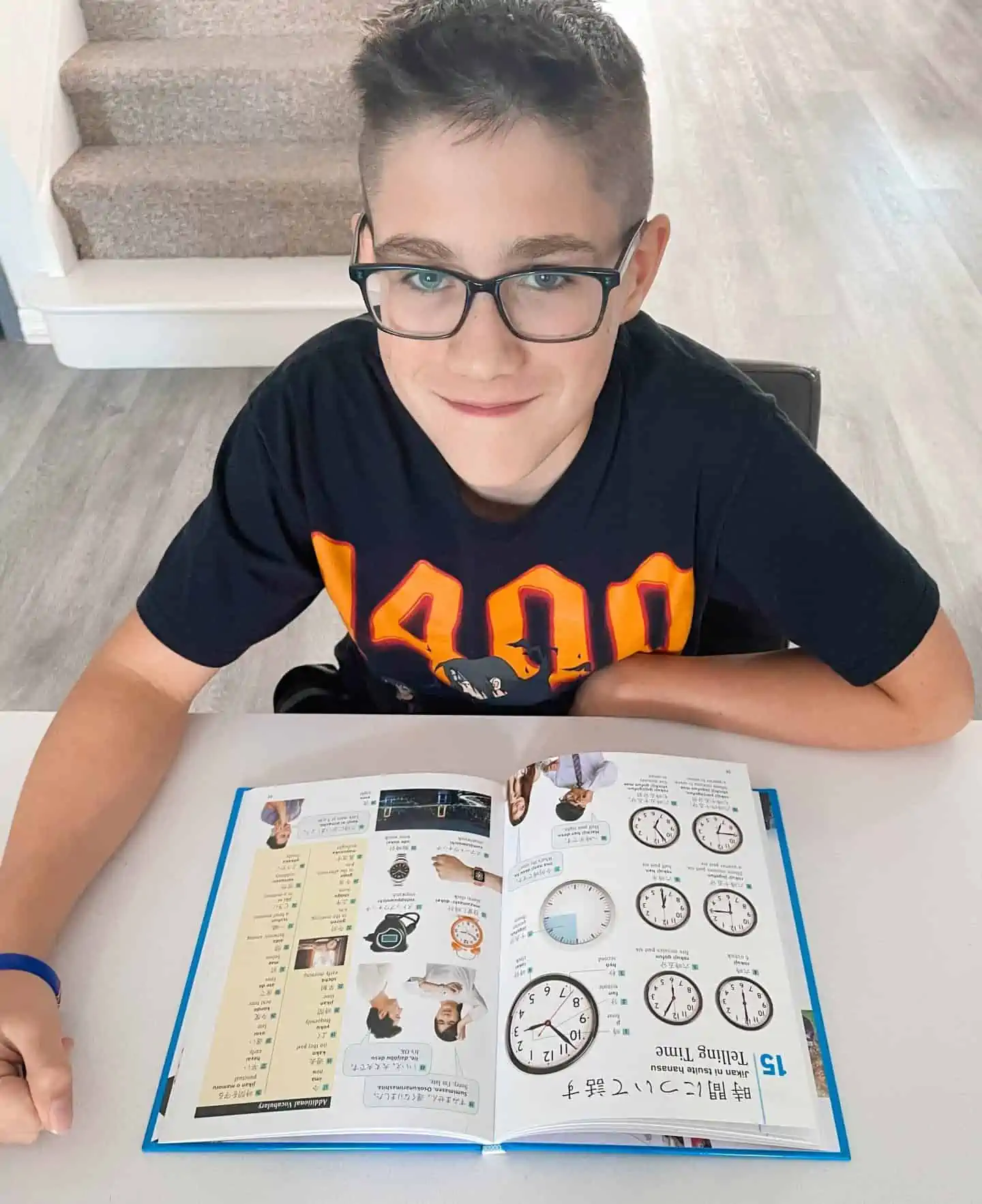
Anime
Every Friday, my son watches an episode of anime in Japanese, currently One Punch Man, with subtitles on.
This weekly tradition gives him a chance to relax while still learning, and it’s something he genuinely looks forward to.
Watching native speakers helps him practice listening skills and makes vocabulary feel more relevant. It has been surprisingly effective, as he’s begun to recognize common phrases and sentence structures.
Last week, he even managed to understand a few lines without needing the subtitles, which was a huge confidence boost!
For homeschoolers learning Japanese, incorporating popular media like anime adds a cultural aspect to the language study and makes it feel more relevant and fun.
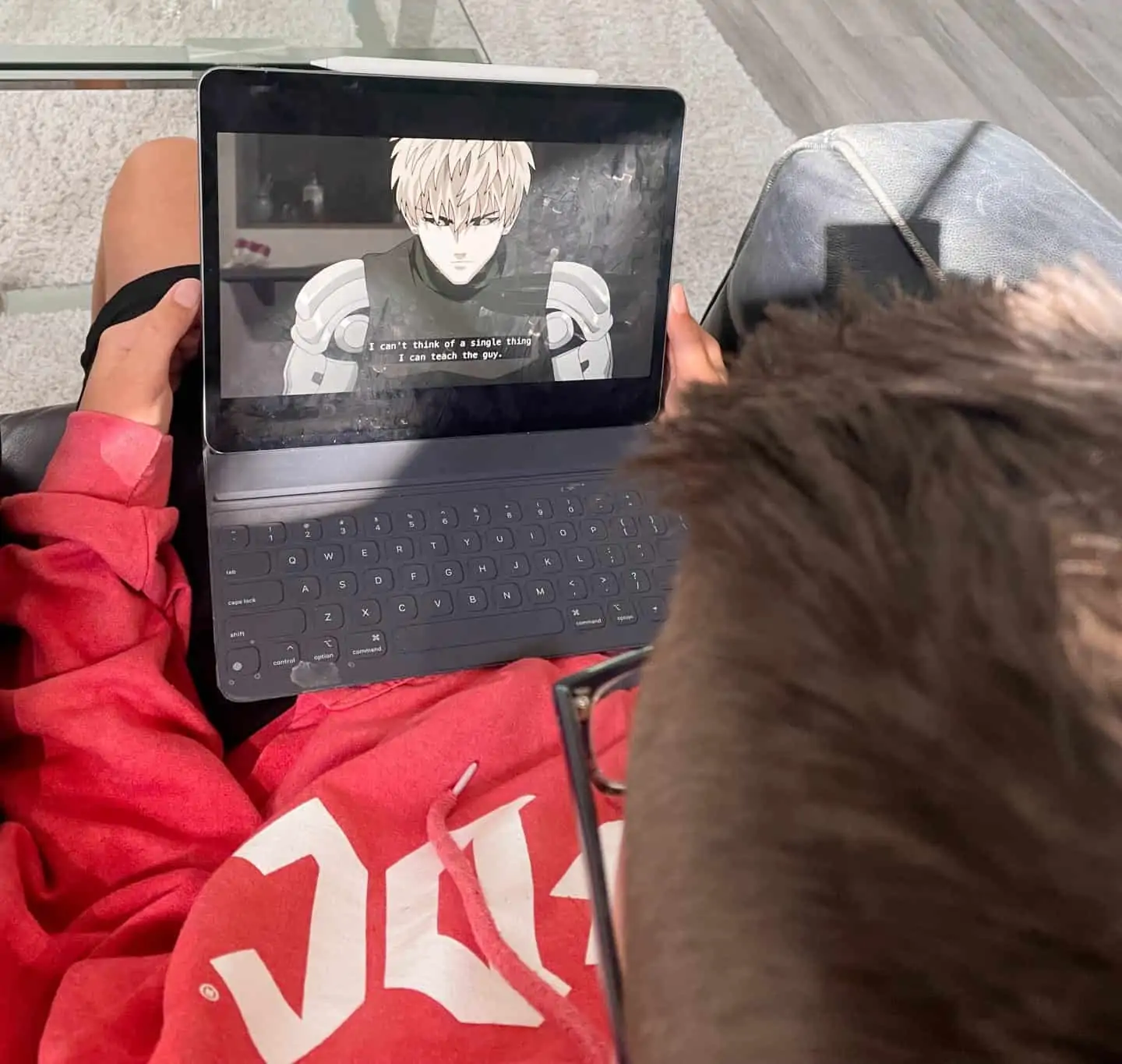
Japanese from Zero review
If your child is eager to learn Japanese, we both highly recommend Japanese from Zero!
It’s a structured, self-paced program that teaches all three Japanese writing systems. Hiragana (for native Japanese words), katakana (for foreign words), and kanji (characters that represent whole words or names).
This self-paced approach fits our homeschooling style, allowing my son to progress confidently.
My son spends an hour each day from Monday to Thursday using Japanese from Zero! On Fridays, he applies what he’s learned by watching anime in Japanese.
One of the highlights of this program is George Trombley, the tutor and creator of the series, who brings humor and storytelling to each lesson. My son finds George’s teaching style very engaging, which has made a huge difference in keeping him motivated and invested.
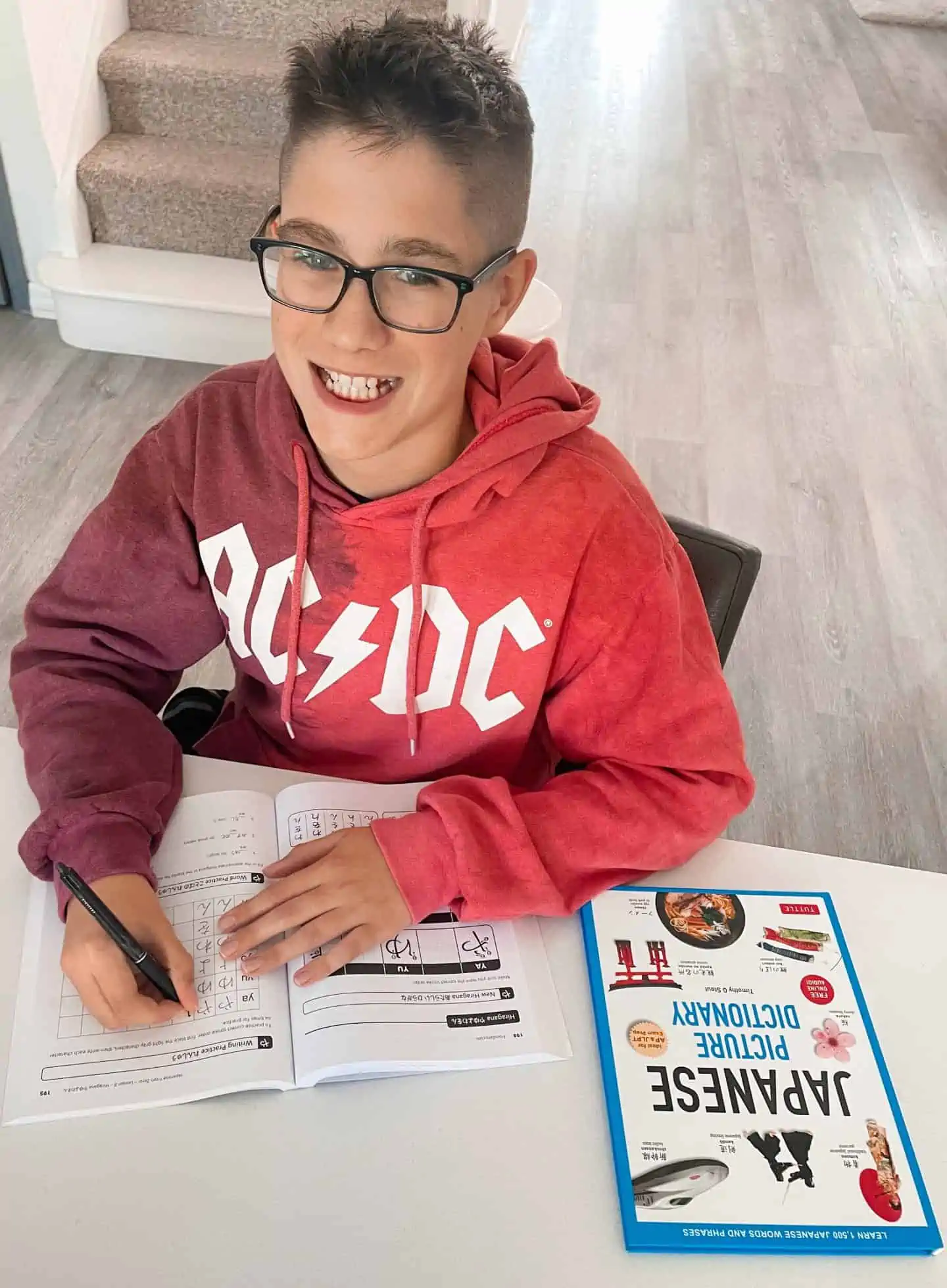
The Japanese from Zero! workbook begins with five pre-lessons that cover the basics of Japanese and conversational foundations. Following these, there are 13 structured lessons, each one building on essential language skills. In each lesson, learners explore:
- New hiragana characters
- Everyday phrases and vocabulary
- Grammar essentials
- Q&A practice (Japanese to English and English to Japanese)
- Writing exercises to reinforce new characters
- Common word usage for real-life application
- Matching and translation activities
- Drills for comprehension and retention
- Sentence building exercises
These components make each lesson comprehensive and easy to follow. When my son encounters challenging phrases, the curriculum suggests he review specific sections, helping him master the material before moving forward.
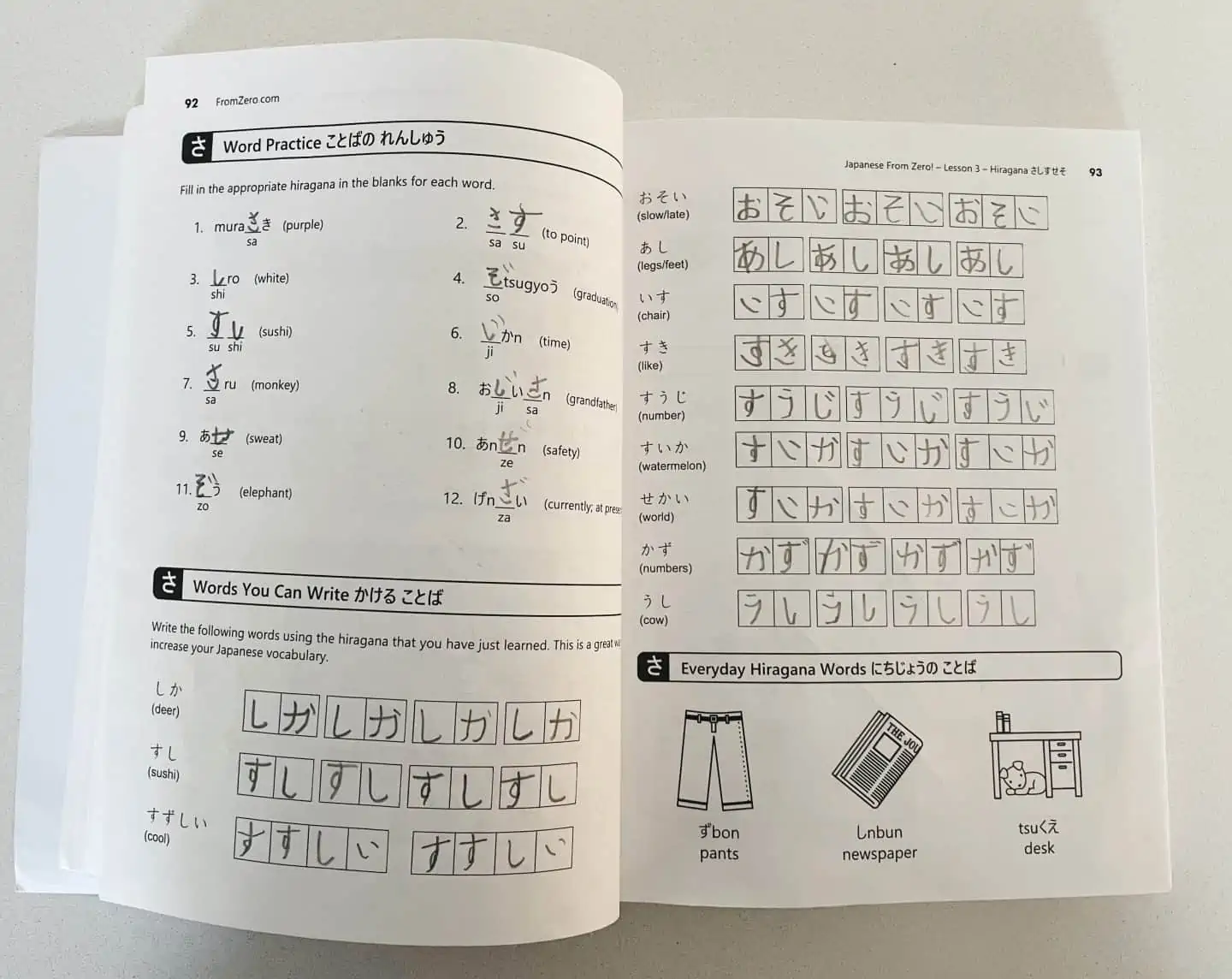
Our routine is consistent: he works through one workbook lesson over four days, combining it with the YouTube videos. Duolingo is used on alternate days as a quick vocabulary review, and Fridays are reserved for watching anime with Japanese subtitles. This setup has helped keep his learning fresh and engaging.
Right now, he’s about halfway through the first book. Although Japanese can be tough, he’s enjoying the journey, and we plan to follow Japanese from Zero! as a multi-year curriculum: Japanese 1 for the first year, Japanese 2 for the second, and so on.
If he completes a level before the year is up, he’ll start over to reinforce his skills. This isn’t to be repetitive but to ensure he builds a strong foundation and gains confidence in his Japanese.
We’re even planning a trip to Japan in a few years, and my hope is that he’ll be able to guide us with what he’s learned—an exciting goal that keeps him motivated!
Can I use Japanese as high school credit for homeschool?
Yes, you can, but since Japanese from Zero! isn’t an accredited curriculum, students aiming to use it as a high school foreign language credit may need to take the AP Japanese exam or similar proficiency tests.
Since my son began his high school foreign language credits early, he’ll continue studying Japanese throughout high school.
This way, he’ll be prepared for an AP-level exam and will ideally achieve conversational fluency—not just meet a high school requirement.
For us, the focus of this Japanese homeschool curriculum is practical language skills that my son can truly use.
Last Updated on 11 November 2024 by Clare Brown




